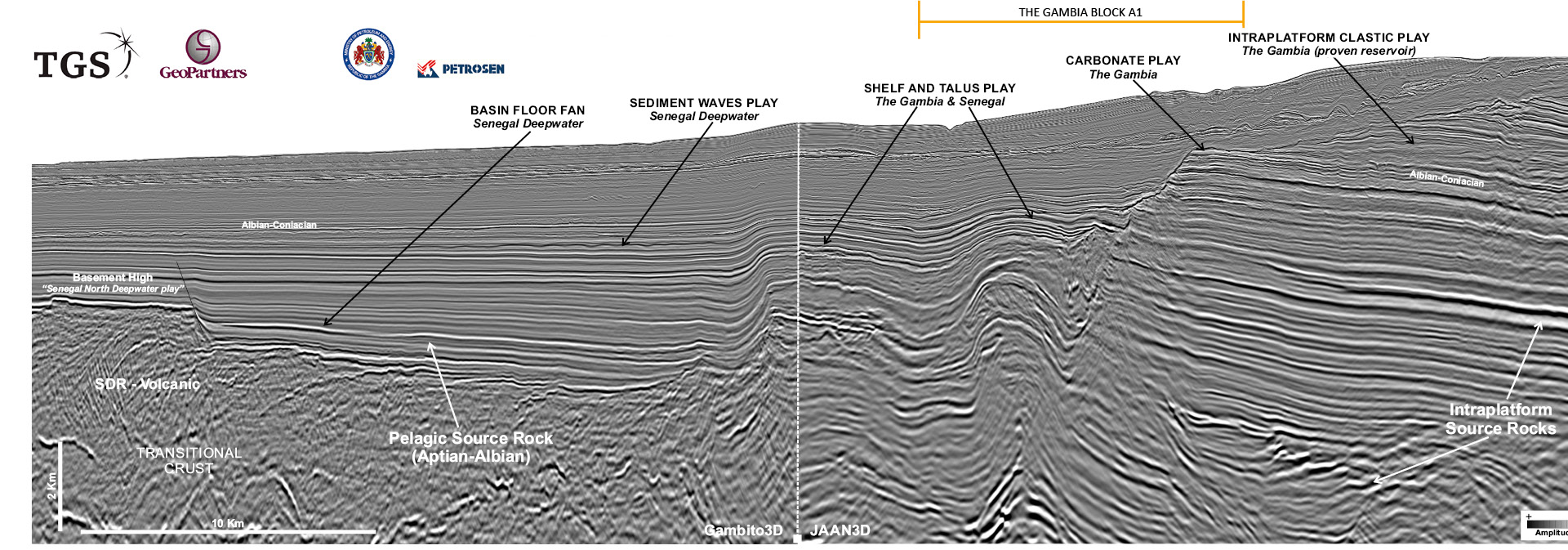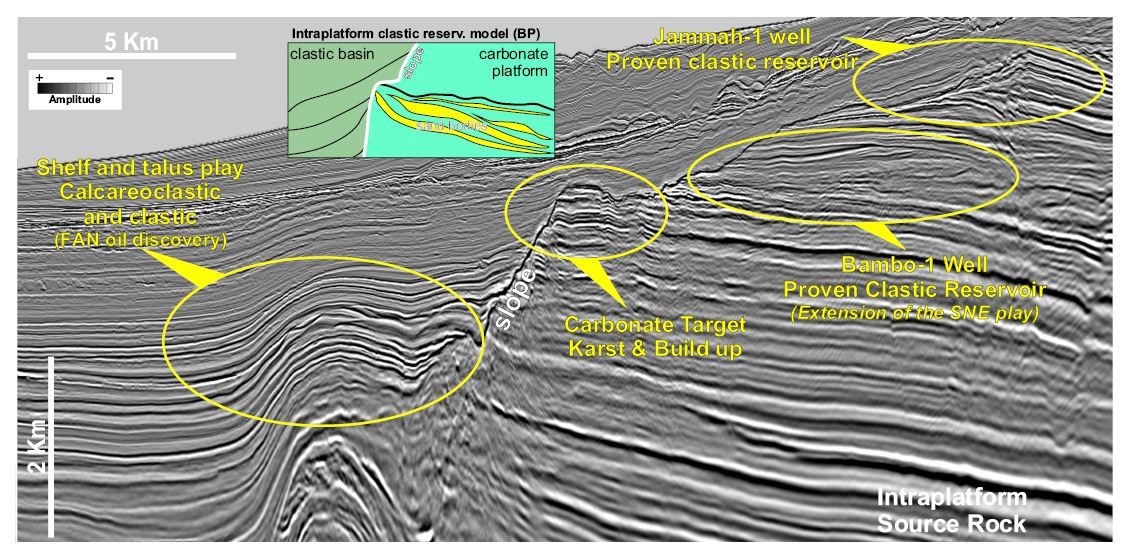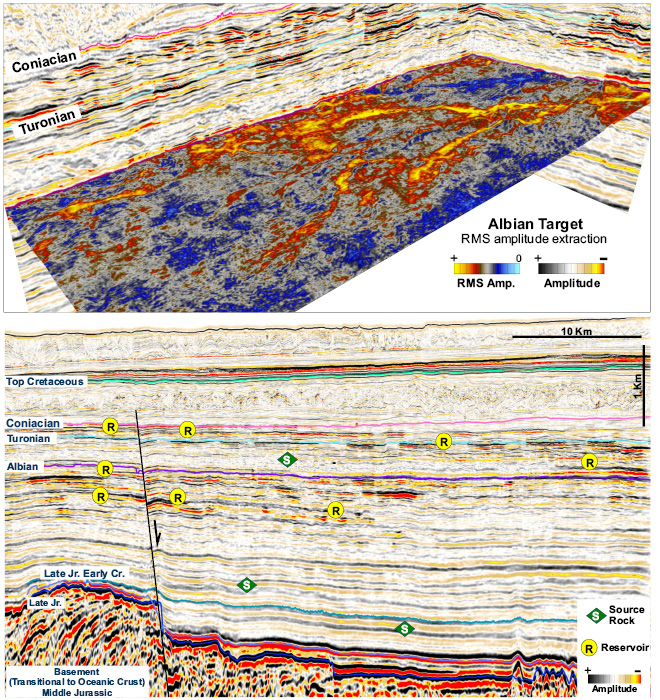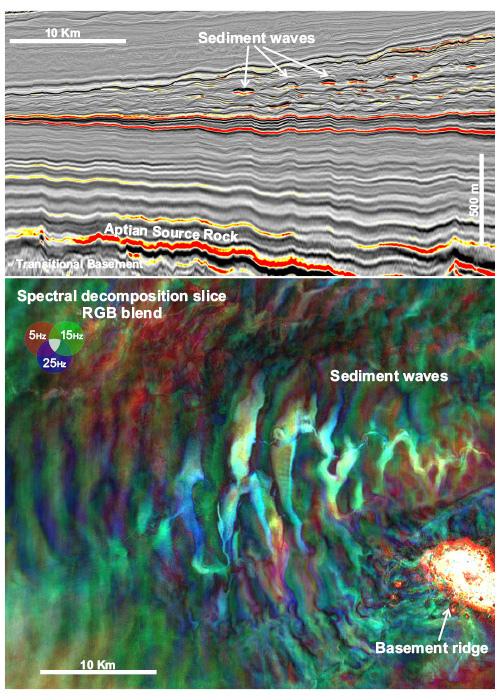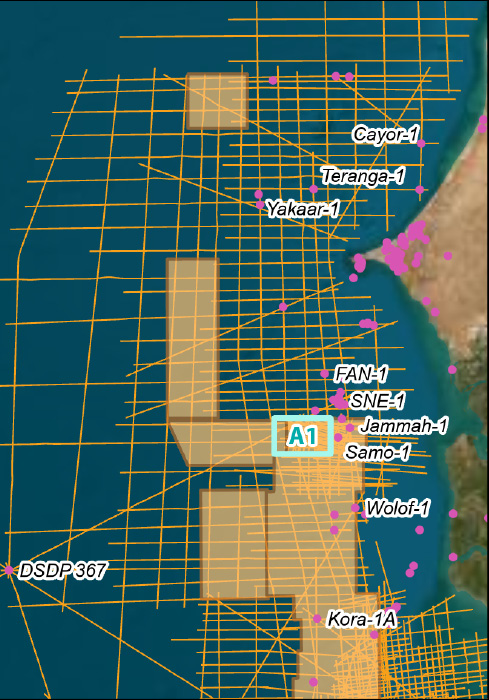
Connecting the shelf to the deepwater
The Gambia, bid opportunity prospects
Block A1 is now open to exploration, with several untested prospects, combining mixed structural-stratigraphic closures. The hydrocarbon charge is provided by two different source rock systems: within the carbonate platform and in the pelagic environment (Foldout and Figure 1). The pelagic shales are easily recognised by seismic character and are widely distributed throughout the deepwater areas, over transitional and onto the neighbouring oceanic crust, allowing oil maturity at multiple burial depths due to different thermal regimes. The intraplatform source rocks are deeply buried underneath the Cretaceous shallow water limestones.
Migration pathways converge at the uplifted crests along the palaeo-shelf edge of the landward dipping shelf, where most of the structural and stratigraphic closures present themselves. Porous, karstified limestones and coarse-grained clastics present reasonable trap sizes and reservoir properties, as highlighted by their geophysical responses, and can be associated with viable target volumes. The good quality of intra-platform clastic reservoirs has been proven by wells Bambo-1, Samo-1 and Jammah-1, offshore The Gambia, and future successes are expected in mixed stratigraphic-structural prospects – analogous to those in the discoveries of the SNE and FAN wells (Figure 1).
Deepwater Senegal North, new plays
Organic-rich shales can be unequivocally mapped, by the seismic signature of kerogen as a low frequency trough and its respective AVO response, from the carbonate shelf far into the most distal areas of the abyssal plain (confirmed by DSDP-367) and are directly deposited on basaltic basement and the SDRs (Seaward Dipping Reflectors of extrusives). Seismic amplitude analysis in conjunction with basin modelling suggests the presence of a play with a working petroleum system at around 3–4 km below seafloor with an oil-mature Aptian-Albian source rock (Figure 2b).
Several deepwater channel and lobe systems have been identified within the Albian to Coniacian intervals on 3D seismic data (Figure 2).
The main potential reservoir intervals are within the Albian and Turonian channel and lobe systems. RMS amplitude extractions along the Albian reservoir targets show numerous channelised bodies, interconnected forming a broader lobe system (Figure 2a). The deepwater turbidite lobe reservoirs have massive hydrocarbon potential and represent one of the most promising exploration targets for hydrocarbon industry.
These Cretaceous deepwater turbidite channel-lobe fairways not only deposited above the Early Cretaceous source rock intervals, but they are also directly connected to the basinal source rocks by gravity faults which are developed on a regional basement high. This basement structure possibly is associated with a movement of a major transform fault.
The faults would be a perfect migrating route for hydrocarbon to travel up to the directly above reservoir intervals.
Deepwater Senegal South, extensive plays
Deepwater offshore southern Senegal, the Mid–Late Cretaceous turbidite influx sediments have been redistributed by bottom currents, reworking them into mixed turbidite and contourite systems, in this area present as sediment waves. Geomorphological analyses of the 3D seismic data suggest that high amplitude sediment wave plays are characterised by a climbing ripple relief in the seismic section, and a distinct geometry in aerial view, especially well defined by in the spectral decomposition RGB blends (Figure 3). The identified closures are associated with coarse-grained cores of the waves, determined by high amplitudes on the stack and mixed frequencies on the spectrum. Sediment waves may be developed into leads and even prospects for the closing nature of their deposition, delineated and corroborated by amplitude brightening and AVO anomalies.

